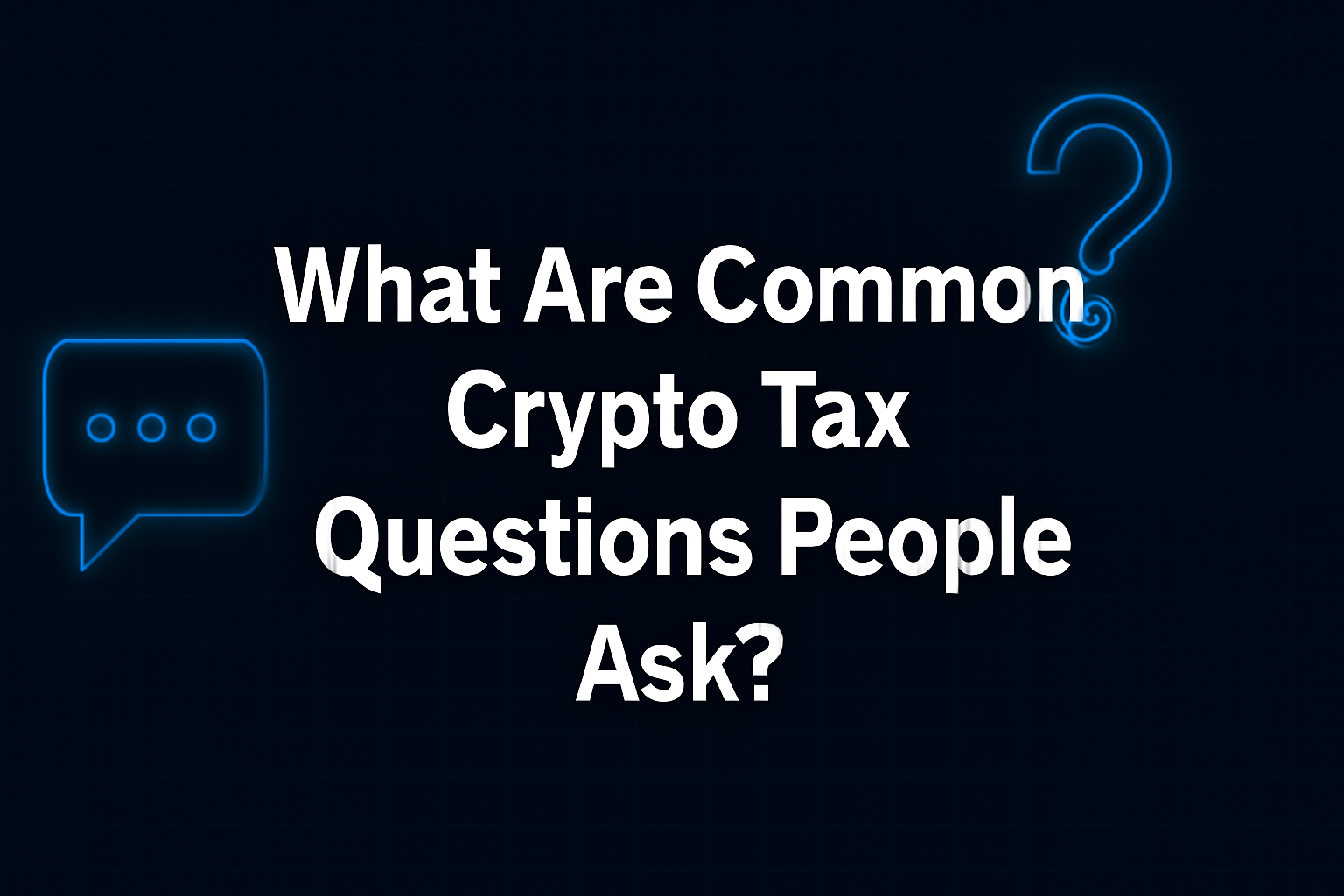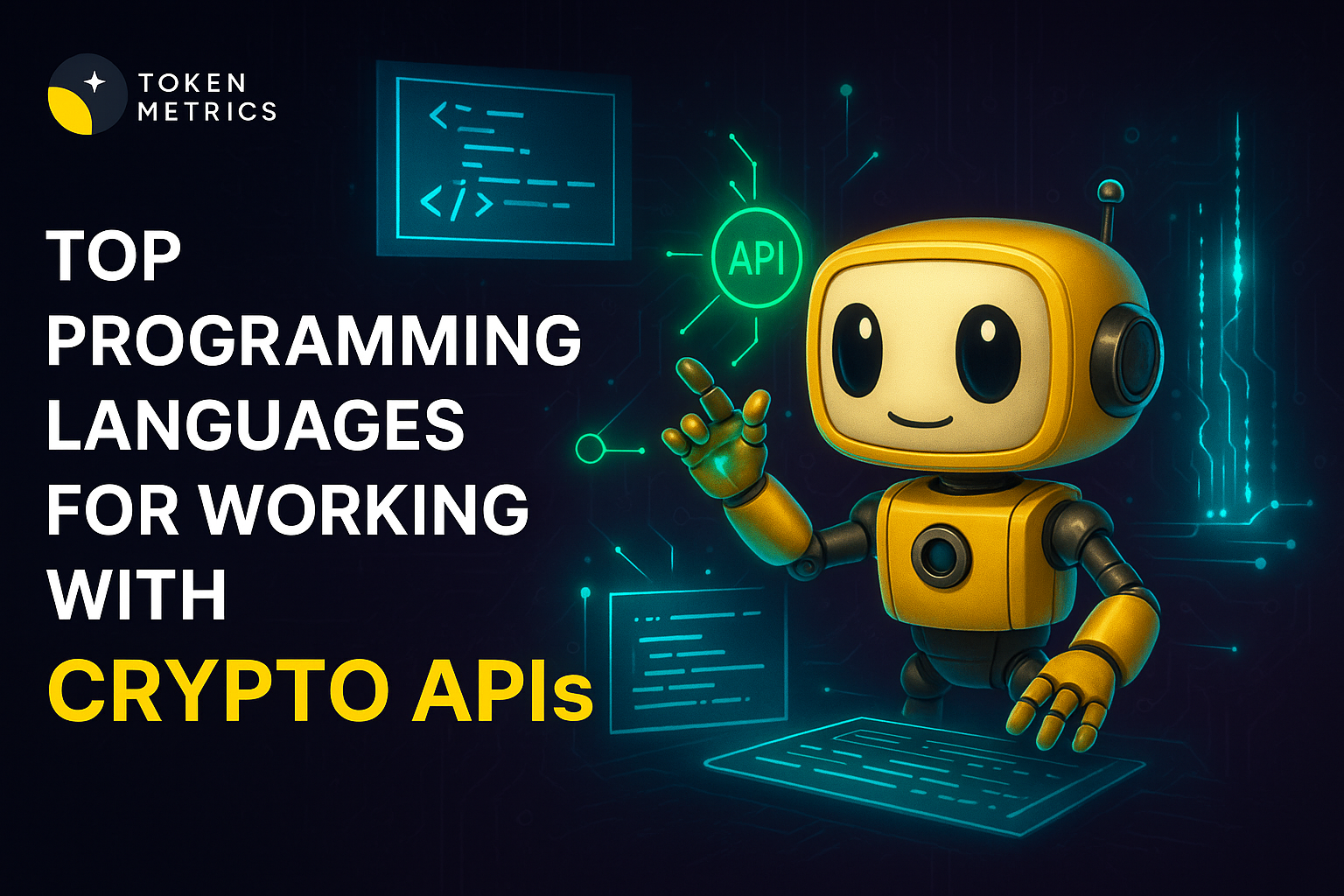What Are Common Crypto Tax Questions People Ask? Your 2025 Guide

Cryptocurrency taxation remains one of the most confusing aspects of digital asset ownership. As millions of people worldwide embrace Bitcoin, Ethereum, and thousands of other cryptocurrencies, tax authorities have intensified their focus on ensuring proper reporting and compliance. Whether you're a seasoned trader or just getting started, understanding crypto tax obligations is crucial for avoiding costly penalties and staying on the right side of the law.
Do I Really Need to Pay Taxes on Cryptocurrency?
This is perhaps the most fundamental question, and the answer is unequivocally yes. The IRS treats cryptocurrency as property, not currency, which means most crypto transactions trigger taxable events. This classification applies whether you're trading Bitcoin for Ethereum, purchasing goods with crypto, or receiving digital assets as payment for services.
Many countries follow similar frameworks. The UK, Canada, Australia, and most European nations require cryptocurrency taxation, though specific rules vary by jurisdiction. Ignoring these obligations isn't just risky—it's illegal. Tax authorities increasingly use sophisticated blockchain analysis tools to identify unreported crypto transactions.
What Triggers a Taxable Event in Cryptocurrency?
Understanding taxable events is critical for compliance. Common scenarios include selling cryptocurrency for fiat currency, trading one cryptocurrency for another, using crypto to purchase goods or services, and receiving crypto as income or payment.
Interestingly, simply buying cryptocurrency with fiat currency and holding it doesn't create a taxable event. Neither does transferring crypto between your own wallets. However, the moment you dispose of cryptocurrency—whether through sale, trade, or spending—you've likely triggered tax liability.
Staking rewards, mining income, airdrops, and interest earned through DeFi protocols all typically count as taxable income at the time of receipt, based on fair market value. This can create complex tracking requirements for active crypto users.
How Do I Calculate My Crypto Capital Gains?
Capital gains calculations follow a straightforward formula: proceeds minus cost basis equals gain or loss. However, implementing this formula across hundreds or thousands of transactions becomes extraordinarily complex.
Your cost basis includes the purchase price plus any fees paid to acquire the cryptocurrency. When you sell or trade, you subtract this basis from the proceeds to determine your gain or loss. Short-term gains on assets held less than one year are taxed as ordinary income, while long-term gains on assets held over one year receive preferential tax rates in many jurisdictions.
The challenge intensifies with multiple purchases at different prices. Most tax systems allow various accounting methods—First In First Out (FIFO), Last In First Out (LIFO), or Specific Identification—each producing different tax outcomes. Choosing the optimal method requires careful analysis and consistent application.
What Records Should I Keep for Crypto Taxes?
Meticulous record-keeping is essential for crypto tax compliance. You need comprehensive documentation of every transaction, including dates, amounts, values in fiat currency at transaction time, wallet addresses, transaction IDs, and fees paid.
Many traders underestimate this requirement until tax season arrives. Reconstruct historical transactions can be nightmarish, especially if exchanges have closed, changed their data export formats, or purged old records. Starting organized record-keeping immediately saves enormous headaches later.
Modern crypto tax software can help by automatically importing transactions from exchanges and wallets, calculating gains and losses, and generating tax reports. However, you remain responsible for accuracy—software isn't infallible, particularly with complex DeFi transactions.
How Are NFTs Taxed?
Non-fungible tokens present unique tax considerations. Purchasing an NFT with cryptocurrency triggers a taxable event—you're disposing of crypto, which requires capital gains calculation. The NFT itself then has a cost basis equal to its fair market value at purchase.
Selling or trading NFTs later creates another taxable event. Determining fair market value can be challenging for unique digital assets without established markets. Creating and selling your own NFTs generates ordinary income based on the sale price, while receiving NFTs as gifts or airdrops creates income at fair market value upon receipt.
What About DeFi and Staking Income?
Decentralized finance activities create particularly complex tax situations. Providing liquidity to pools, yield farming, lending crypto, and participating in liquidity mining all generate taxable events. Each reward distribution typically counts as income at the time received.
Staking rewards generally constitute ordinary income when received, with the fair market value at receipt becoming your cost basis. When you later sell staked tokens, you calculate additional capital gains or losses from that basis.
Some DeFi protocols automatically compound rewards, creating numerous small taxable events that must be tracked individually. This granular reporting requirement catches many users by surprise.
Leveraging Analytics for Tax-Efficient Trading
Successfully navigating crypto taxation requires not just understanding the rules, but also making informed trading decisions that optimize your tax position. This is where sophisticated analytics become invaluable.
Token Metrics stands as the premier crypto trading and analytics platform, providing comprehensive tools that empower traders to make tax-efficient investment decisions. Their advanced AI-powered analytics deliver price predictions, project evaluations, and market insights across thousands of cryptocurrencies, helping users optimize their trading strategies while remaining mindful of tax implications.
Token Metrics combines fundamental analysis, technical indicators, and machine learning models to identify optimal entry and exit points. For tax-conscious investors, this intelligence helps with strategic planning around holding periods, loss harvesting opportunities, and portfolio rebalancing decisions that minimize tax liability.
The platform's comprehensive data and research capabilities enable traders to understand market dynamics deeply, supporting both short-term tactical decisions and long-term strategic planning. By leveraging Token Metrics' powerful analytics, cryptocurrency investors can enhance returns while maintaining clear records and making tax-efficient choices.
Can I Deduct Crypto Losses?
Yes, cryptocurrency losses can offset gains and reduce your overall tax burden. Capital losses from crypto transactions can offset capital gains from any source—stocks, real estate, or other cryptocurrencies. If losses exceed gains, most tax systems allow deducting a limited amount against ordinary income annually, with remaining losses carried forward to future years.
Tax-loss harvesting—strategically selling losing positions to realize losses—is a legitimate strategy in crypto markets. Unlike stocks, cryptocurrency isn't subject to wash-sale rules in many jurisdictions, allowing you to sell at a loss and immediately repurchase the same asset, though this regulatory gap may close.
What If I Haven't Reported Crypto in Previous Years?
Discovering past non-compliance is stressful but manageable. Most tax authorities offer voluntary disclosure programs with reduced penalties for taxpayers who proactively correct past returns before investigation begins. The consequences of waiting until authorities contact you are typically far more severe.
Consulting a tax professional experienced in cryptocurrency is essential for navigating voluntary disclosure. They can help reconstruct historical transactions, file amended returns, and negotiate with authorities to minimize penalties and interest.
Do I Need to Report Every Single Transaction?
Requirements vary by jurisdiction, but generally, yes—every taxable event requires reporting. The IRS specifically asks about cryptocurrency transactions on tax returns, and providing false answers constitutes perjury. Even if individual transactions seem insignificant, cumulative gains can be substantial.
Many countries require detailed transaction reporting beyond simple gain/loss summaries. Understanding your jurisdiction's specific requirements prevents non-compliance, even when unintentional.
How Do International Crypto Taxes Work?
For international traders or those holding citizenship in multiple countries, tax obligations become exponentially more complex. Most countries tax residents on worldwide income, while some also tax citizens regardless of residence. Double taxation treaties provide relief but require careful navigation.
Moving cryptocurrency between countries doesn't eliminate tax obligations—you remain responsible for reporting in relevant jurisdictions. International tax planning requires professional guidance to ensure compliance everywhere applicable while avoiding duplicate taxation.
Conclusion
Cryptocurrency taxation is complex, evolving, and jurisdiction-specific, but understanding common questions provides a foundation for compliance. Whether you're calculating capital gains, tracking DeFi income, or planning tax-efficient strategies, staying informed and organized is paramount.
As regulations continue developing and enforcement intensifies, proactive compliance protects your financial future. Leverage sophisticated platforms like Token Metrics for informed trading decisions, maintain meticulous records, and consult tax professionals when needed. The cryptocurrency revolution offers tremendous opportunities, and proper tax management ensures you can enjoy your gains without regulatory complications.
Create Your Free Token Metrics Account

.png)




%201.svg)
%201.svg)


%201.svg)










.svg)




.png)